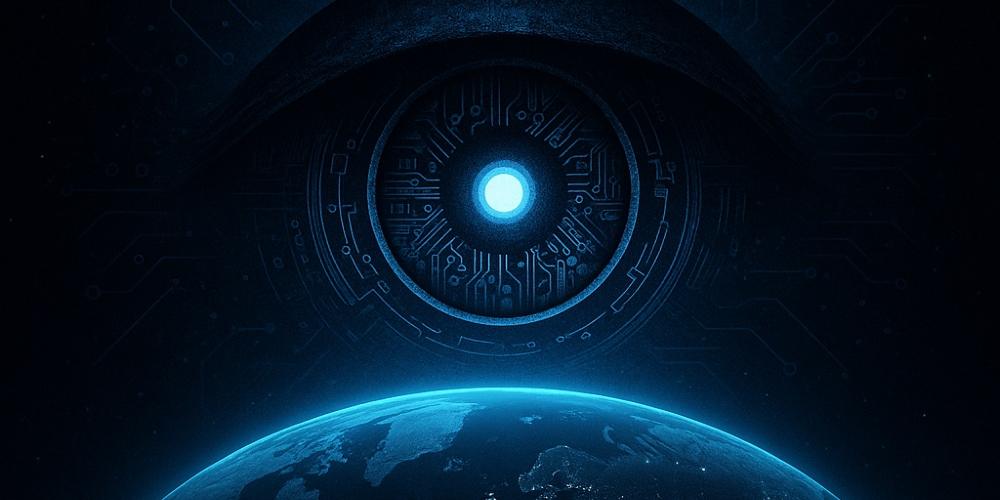It’s not technically a merger, but scary none the less. And Nvidia has a market cap of over $5 trillion while playing circular investment with Oracle and Open AI. Things seem to be accelerating towards AI agents and a surveillance system right out of a science fiction horror movie.

By Jacob Dashiell
The merger between chip titan Nvidia and data-mining powerhouse Palantir represents far more than a business partnership. It’s the next great leap forward for the global surveillance architecture—a digital nervous system capable of tracking, predicting, and influencing nearly every aspect of modern life. And their latest endeavor is a harbinger.
On paper, the two companies are collaborating to create an “integrated technology stack for operational AI.” In reality, this is the fusion of the world’s most powerful hardware with one of the most intrusive software ecosystems ever designed. Nvidia’s GPU-driven supercomputing infrastructure will now integrate directly with Palantir’s “Ontology,” the framework that connects massive data sets from governments, corporations, healthcare systems, and financial institutions into a single, unified analytical grid.
Palantir—originally funded by the CIA’s venture arm, In-Q-Tel—built its empire on data fusion. Its software underpins intelligence gathering for the Pentagon, the NSA, and numerous law enforcement agencies worldwide. Nvidia, meanwhile, holds the keys to the computational horsepower that makes AI possible. Together, they’re creating what could be described as a living digital organism — a constantly learning, constantly adapting system with the ability to analyze and act upon vast streams of information in real time.
According to their joint announcement at Nvidia’s GTC conference in Washington, D.C., the partnership aims to “accelerate and optimize complex enterprise and government systems.” That may sound benign—until you realize what “enterprise and government systems” actually entail. These are the networks that manage critical infrastructure, financial markets, healthcare databases, military logistics, and even transportation control systems.
Palantir’s AI Platform (AIP), which already serves intelligence agencies and major corporations, will now be supercharged by Nvidia’s GPU-accelerated computing and open AI models. Together, they promise “context-aware reasoning” and “domain-specific automations.” In simpler terms, this means decision-making power once reserved for humans will be handed to autonomous digital agents—AI programs that interpret, prioritize, and execute actions based on massive data feeds.
What kind of “actions”? That’s the billion-dollar question. In a corporate environment, it might mean optimizing supply chains. In a defense or government setting, it could mean tracking individuals, predicting civil unrest, or deploying automated surveillance drones. With 6G data speeds on the horizon and every smart device acting as a sensor, the infrastructure for total observation is nearly complete.
The Technocratic Dream: Real-Time Command of Everything
The partnership effectively creates the central nervous system of what global planners call “integrated AI infrastructure.” It’s the foundation for the so-called “smart world” — smart cities, smart grids, smart transportation, and even smart governance. Each node in that system feeds data into Palantir’s Ontology, where it’s processed by Nvidia’s AI computing engines.
In practice, this allows for real-time monitoring of economic flows, energy consumption, population movements, and communication networks. To the public, this may sound like progress; to those who understand the technocratic playbook, it’s the framework of digital control. Every innovation in “operational AI” brings humanity closer to a world where the system doesn’t just observe behavior—it anticipates and shapes it.
The rhetoric from both companies is revealing. Nvidia’s Jensen Huang said the collaboration will “turn enterprise data into decision intelligence.” Palantir’s Alex Karp added that it will deliver “asymmetric value” to customers. The language is strategic: “decision intelligence” implies predictive authority, while “asymmetric value” suggests power imbalance. Whoever controls the algorithms controls the outcomes—and the rest of society simply reacts.
It’s no coincidence that both Nvidia and Palantir are deeply tied to the same government and corporate elites driving the World Economic Forum’s “Fourth Industrial Revolution.” Palantir’s government contracts span NATO, the U.S. Department of Defense, and the British Ministry of Defence. Nvidia, meanwhile, dominates the AI hardware market that underpins every major AI initiative globally—from China’s surveillance cities to the U.S. military’s Joint All-Domain Command and Control (JADC2) project.
This partnership is the next step toward the consolidation of power through digital governance. It’s not just about faster chips or smarter software—it’s about control. The fusion of Palantir’s data lattice and Nvidia’s computational engine gives the globalist technocracy an unprecedented upgrade: the ability to see, know, and eventually decide more than any elected government or human institution ever could.
From a deeper perspective, this isn’t just about technology—it’s about the architecture of authority. Systems like this mimic omniscience, promising safety and efficiency in exchange for autonomy. The result is a kind of digital idolatry, where trust is placed not in truth or conscience but in the algorithm. Humanity becomes data. Privacy becomes an outdated concept. And freedom becomes conditional upon compliance with an all-seeing system.
Those who have studied prophecy will recognize the pattern. The infrastructure being built today mirrors the biblical description of a world system where buying, selling, and movement are monitored and controlled. Whether one views that through a theological or philosophical lens, the trend is undeniable: centralization, automation, and surveillance are converging into something humanity has never faced before.
Palantir and Nvidia may call it “operational AI.” Others might more accurately call it the digital skeleton of the beast system.